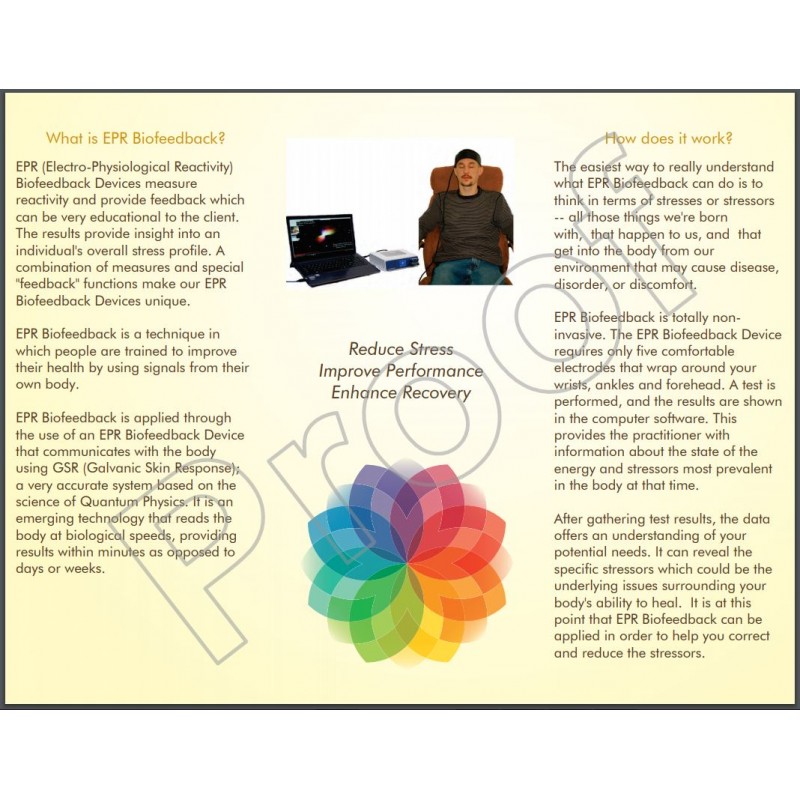In studies conducted in a “reliable, operationally defined manner,” the Association for Applied Psychophysiology and Biofeedback rates biofeedback as a “4” on a scale of 1 to 5 in efficacy for treating anxiety when compared to other forms of behavioral therapy. The National Institutes of Health reports that biofeedback may help in relieving symptoms of anxiety.
While worry and stress occur naturally and for most are only temporary, chronic anxiety may interfere with even a seemingly simple task like grocery shopping. The most successful treatment for debilitating anxiety, according to the University of Maryland Medical Center, involves a combination of medication and cognitive behavioral therapy, such as biofeedback, under close supervision.
Odds are you already have and will again experience anxiety. For some, it starts with a quick tightening of the gut that may progress to an increased heart rate and rapid breathing, all natural responses to the extra adrenaline your body supplies when you face a threatening situation. Unfortunately, our minds often consider activities like preparing a special dinner as threatening as an encounter with a grizzly. Biofeedback may give you control over how your body handles stressful situations and decrease the health risks associated with chronic anxiety.
Source: LIVESTRONG
Stress can become habitual and you can even forget how to relax sometimes; however, biofeedback can teach you how to get back to a more relaxed state. Although biofeedback is helpful to treat stress, it can also help a number of other conditions such as:
- Asthma
- Chemotherapy side effects
- Constipation
- Heart problems
- High blood pressure
- Incontinence
- Irritable bowel syndrome
- Pain
- Physical performance
- Raynaud’s disease
Although it’s not a sure cure, biofeedback helps many people with chronic pain, including the pain of arthritis, muscle spasms, and headache (both migraine and tension headache). It can reduce tension and anxiety, combat chronic insomnia and fatigue, alleviate depression, reduce hyperactivity and attention deficit disorder, and even help overcome alcoholism and drug addiction. Some people have found it helpful for controlling high blood pressure or an abnormal heart rate. It’s also useful for retraining, reconditioning, and strengthening muscles after an accident or surgery, restoring loss of control due to pain or nerve damage, and overcoming urinary (or bowel) incontinence.
For asthmatics, biofeedback offers the possibility of controlling bronchial spasms and reducing the severity of attacks. Many victims of Raynaud’s disease (periodic loss of circulation in the fingers) have been able to rectify the problem through biofeedback. The technique has helped others deal with digestive disorders such as ulcers, irritable bowel syndrome, acidity, dysfunction of the esophagus, and difficulty swallowing.
Source: the UTMB (The University of Texas Medical Branch)
Biofeedback is a safe, non-invasive technique that has provided relief for many people. The success rate of biofeedback will change based upon the person and the condition being treated; however, if biofeedback is successful for you, you can help control your symptoms whenever and wherever as well as reduce your intake of medication.
Dealing with your stress is one thing, learning to control it is an entirely different story. While you might still want to resort to Ben and Jerry’s every so often, biofeedback can be an extremely positive technique that will help improve your life.
Stress gets the best of us sometimes, causing us to break down, give up, or indulge in a large helping of not-so-healthy food. While punching a punching bag, going to sleep, or inhaling Ben and Jerry’s might seem like it’s easing our stress, there are better ways to go about it, or in this case, to control it.
Biofeedback is a complementary medicine technique in which you learn to control bodily functions using your mind. You’re connected to electrical sensors that help you measure and receive information about your body. The sensors teach you how to make subtle changes in your body, such as relaxing certain muscles, in order to achieve the results you want. You will perform physical and mental exercises while hooked up to a monitor and when you achieve a desired change in body function, the monitor will beep. In essence, biofeedback teaches you the power of using your thoughts to control your body.
When it comes to stress or anything stress-related such as headaches, digestive disorders, or blood pressure, biofeedback can help relieve those symptoms. Once you’ve learned which physical and mental exercises help you and how to do them, you can then perform them at home.
Source: Brain Up, Florida, a program of the Alzheimer’s Association
There are different types of biofeedback:
- Electromyography (EMG) biofeedback – gives you information about your body’s muscle tension so that you can practice relaxation.
- Temperature (thermal) biofeedback – sensors attached to your fingers or feet measure your skin temperature. Your temperature often drops when you’re under stress, so a low reading can prompt you to begin relaxation techniques.
- Galvanic skin response training – sensors measure the activity of your sweat glands and the amount of perspiration on your skin, alerting you to anxiety.
- Heart rate variability biofeedback – helps you control your heart rate in an effort to improve blood pressure, lung function, and stress and anxiety.
Contact Me to see how I can help you.

